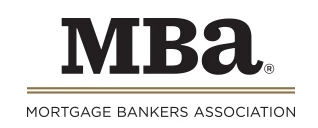Non-QM lending offers potential for lenders who are open to exploring underserved borrower profiles.
The ongoing COVID-19 pandemic has led to several changes for the mortgage industry. Borrower profiles and market norms have also radically changed. However, even with the current mortgage environment, opportunities exist for lenders who are open to exploring underserved borrower profiles— specifically in the Non-Qualified Mortgage (Non-QM) segment Here’s what has changed in the industry and what makes a Non-QM product offering a good strategy to pursue.
EVOLVING BORROWER PROFILES
The impact of the pandemic on national unemployment is a topic that needs little introduction. Statistically speaking, unemployment rates spiked to an all-time high of 14.7 percent in mid-March 2021, overtaking the highest rate seen in the U.S. since the Great Depression.
Here’s the good news, however: there’s also been a 24% increase in start-up businesses across the U.S. between 2019 and 2020, indicating a shift in the professional goals and priorities of people along with a continuation in economic momentum.
This change in the employment structure should be of importance to lenders as it makes up for an upcoming salient borrower profile. With this structural change, a large proportion of loan seekers have now turned into natural candidates for non-QM products rather than the more popular agency products that were meant for the salaried borrowers.
UPWARD TRENDS IN HOME PRICES
While there has recently been a noticeable slowdown in refinance activity, we all know housing prices have increased. This has resulted in an immediate demand for larger sized non-QM loans, within the backdrop of slowing refinance activity.
In the last quarter of 2020, the decline in refinancing was projected to be around 50%.
STRICTER REGULATIONS BY THE GSES
On the regulatory front, both Fannie Mae and Freddie Mac have announced stricter restrictions, limiting the percentage of loans based on their risk criteria. The result is a GSE approval box that has become smaller and has therefore disqualified a sizable number of borrowers who do not align with GSE products.
When looking at the numbers, this phenomenon becomes very apparent. There’s only been a marginal decline in the non-QM space, as compared to the sharp decline in the QM space. Statistically speaking, in 2020, the Non-Qualified Mortgages sector closed $18.9 billion.
EARLY MOVER ADVANTAGE
With majority of lenders preferring Qualified Mortgages, early attention towards the non-QM loans can be significantly rewarding as it helps gain an edge in a fairly lowcompetition environment.
In the current environment, this segment holds promise to fulfil volume expectations, ensuring that overall loan origination volumes are less susceptible to any adverse impacts of the overall economic conditions.
GREATER BARGAINING POWER
Naturally, with fewer lenders to compete with, opportunity for greater volume and market share is appreciated by lenders who cater to non-qualified borrowers.
IMPROVED EFFICIENCY
Non-QM loans typically require fewer conditions and less documentation from borrowers, therefore the typical cycle time of underwriting and processing these loans can be lower and thus raise efficiency, ROI, and profitability for lenders.
EMBRACING SUCCESS IN THE EVOLVED ENVIRONMENT
As a lender, if you see value in the non-QM space, it is imperative that you focus on enhancing the borrower experience and allowing for a smooth process. On the regulatory front, preparedness must include building capacity for meeting ever-changing compliance requirements.
Finally, as a business, it is also necessary to gear up to scale both effectively and efficiently, allowing you to cater to newer volume requirements without putting pressure on the existing cost infrastructure.
One of the most effective strategies to achieve all the above is by partnering with an experienced mortgage solutions provider for non-QM fulfilment. They can help smoothen the transition, generate demand, and then effectively fulfil it efficiently and at a lower cost of origination.
This article was published here: http://digital.themreport.com/i/1424651-mreport-november-2021/19?








